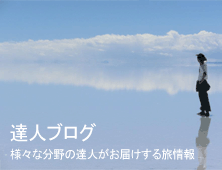Dear bloggers,
It is Christmas time ![]()
![]() and during this period you cannot do without thinking about the Christmas tree, the decorations, the dinners and lunches in the family, the lights that decorate the cities and give them moments of charm and magic to the lives of people. It is also and above all a tradition to go to Christmas Mass, or to attend the Churches.
and during this period you cannot do without thinking about the Christmas tree, the decorations, the dinners and lunches in the family, the lights that decorate the cities and give them moments of charm and magic to the lives of people. It is also and above all a tradition to go to Christmas Mass, or to attend the Churches.
About Churches, today I want to talk about the Church of Sant'Andrea, which is quite close to Piazza Barberini, on a side street.

Benedict XV defined this church, uniquely shaped by the architect Borromini and enriched by two Bernini angels, as the "Roman Lourdes" because on January 20 of 174 years ago, they told that, exactly in here, the Virgin appeared.

Lifting our eyes to the small portion of the sky that opens on the narrow street where it stands, the first thing to notice is the splendid bell tower made by Borromini. One curiosity is that, when the bells ring, the bell tower oscillates so much to be nicknamed by the romans “dancer”. Next to it, there is another creation of the artist's inexhaustible imagination: the dome, which externally appears not with the usual circular shape, but with that of a tower with wavy walls.
The church is very old, but its date of foundation is unknown. It was named “S. Andrea de Hortis” for its position at the foot of the Pincio hill, the hill of the gardens. And the name it still preserves, stems from the fact that this area, at that time, was totally uninhabited and cluttered with hedgehogs.
It is internally a Latin cross with a single nave with barrel vaults and flanked by 4 pairs of arc chapels.
Decorating the Church’s interior, as a precious ornament, we can admire the marble angels carved by Gian Lorenzo Bernini.
They were created to decorate St. Angelo Bridge: the Angel with the cartouche on the right


and The Angel with the crown of thorns on the left.


The beauty of these works pushed the pope of the time, Clement IX (1667 - 1669), to choose to guard them in a place that would shelter them from the weather. In 1729 the grandson of the great architect and sculptor gave them to the church.
Another precious jewel of this church is the third chapel on the left, dedicated in 1842 to the “Madonna del Miracolo” (Madonna of the Miracle) following the prodigious appearance of St. Mary to the Jew Alfonso Ratisbonne.
It is a silent appearance this, St. Mary leaves no message, but makes an eloquent gesture: Alfonso sees the index finger of the Madonna indicating his kneeling. The overwhelming testimony of Ratisbonne ends with a phrase that, for the rest of his life, he loved to repeat: “Elle me tell me, mais j'ai tout compris” (“She did not tell me anything, but I understood everything”).
Address:
Via di Capo le Case, 00187 Roma, Italia
Opening hours:
It is open from 6:30 to 13:00 and from 16:00 to 19:00
Thank you for reading and merry Christmas to all of you!![]()
![]()
![]()
Guenda



 テーマ: By Italian Staff
テーマ: By Italian Staff












